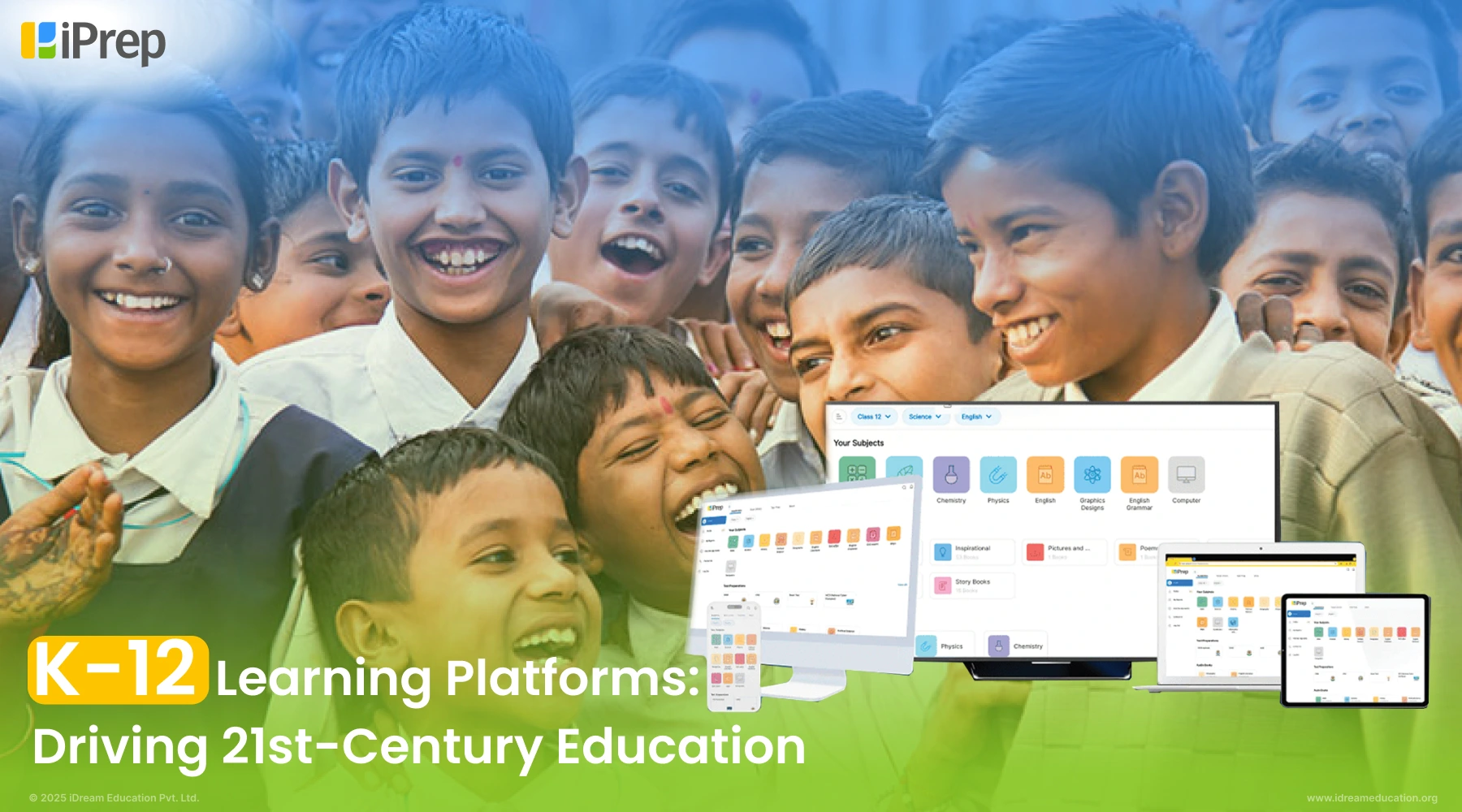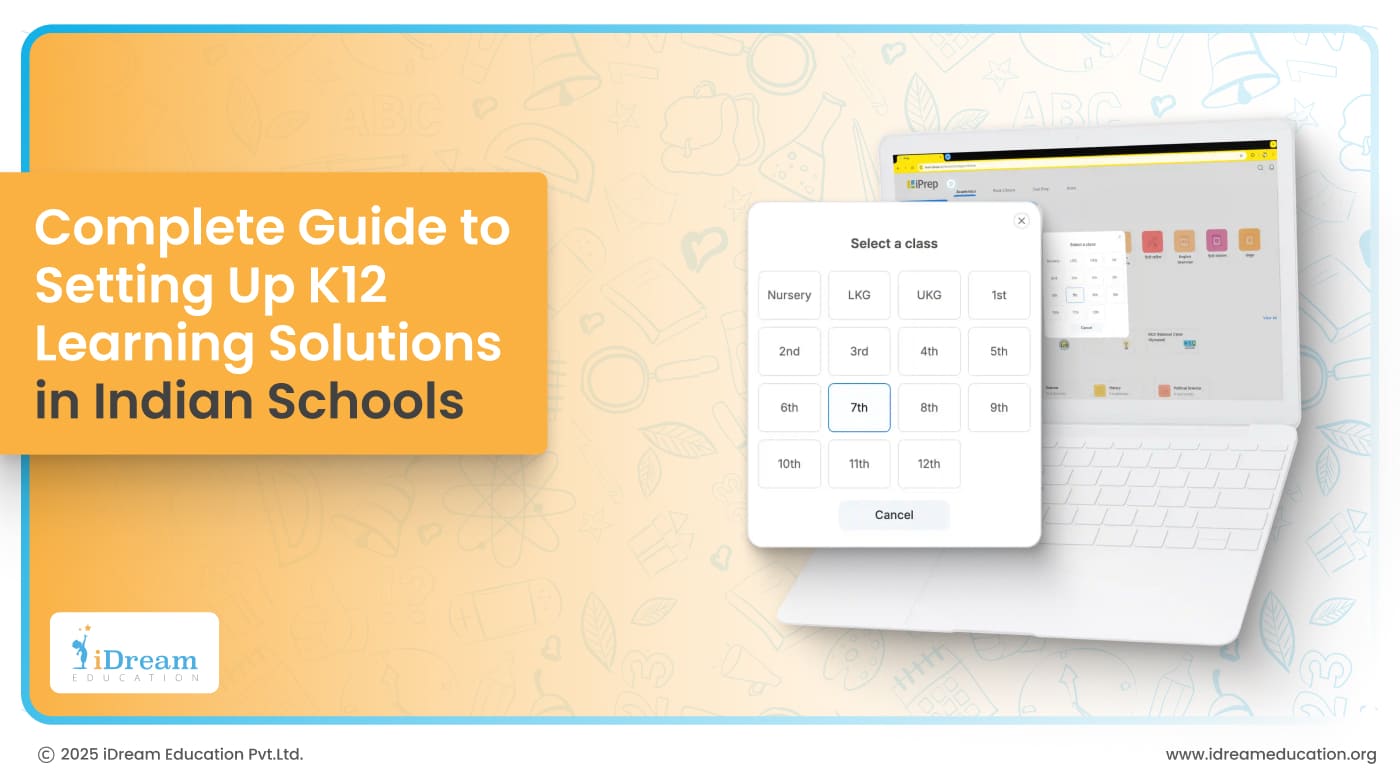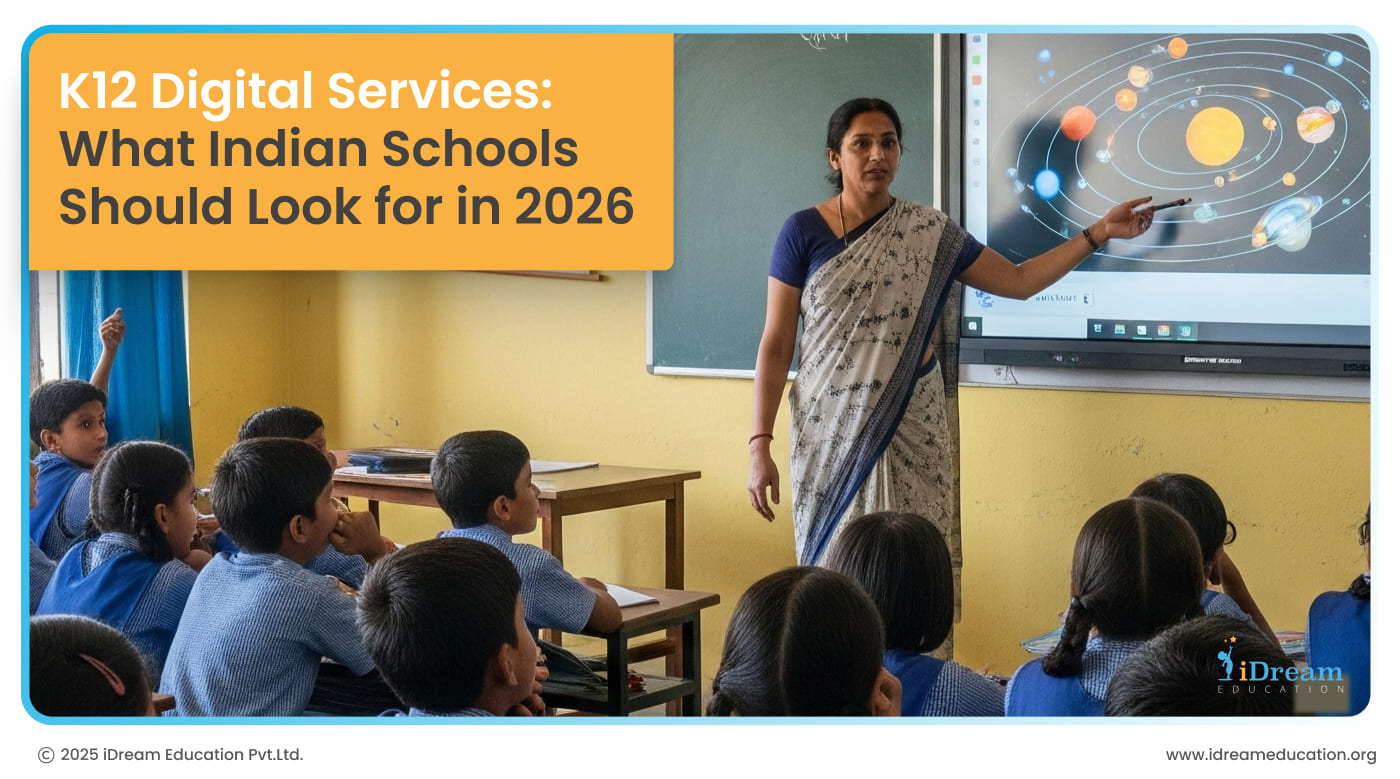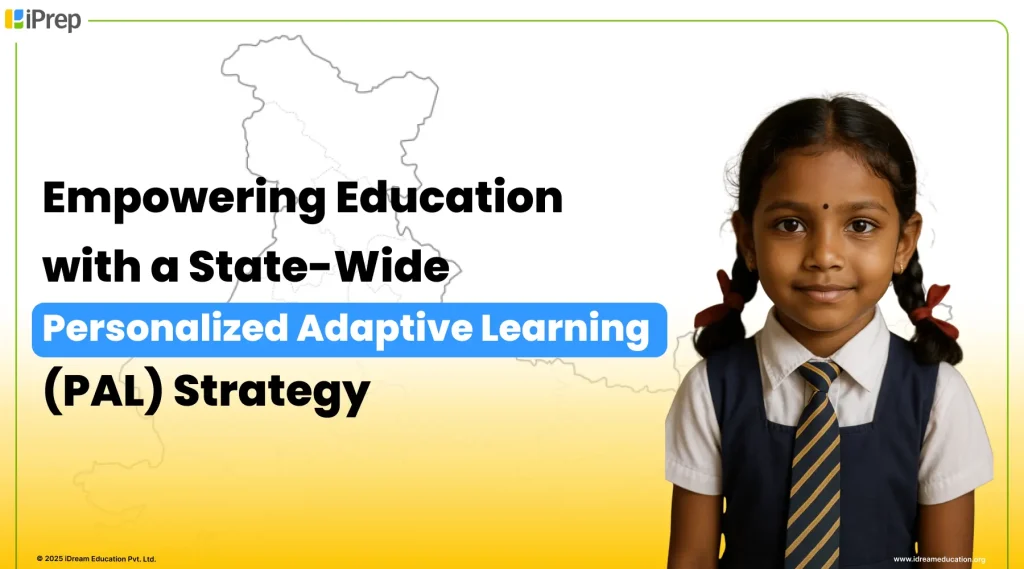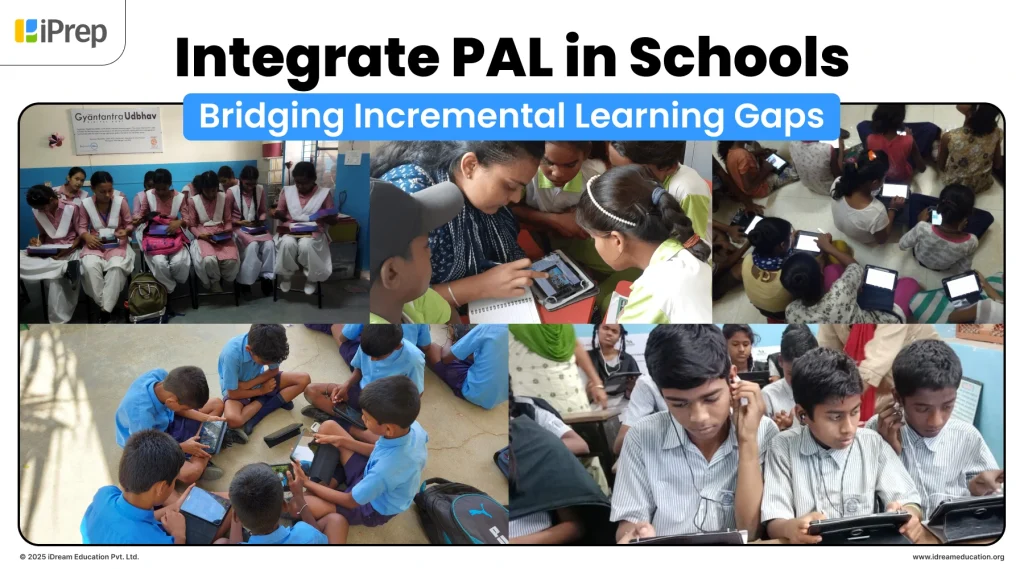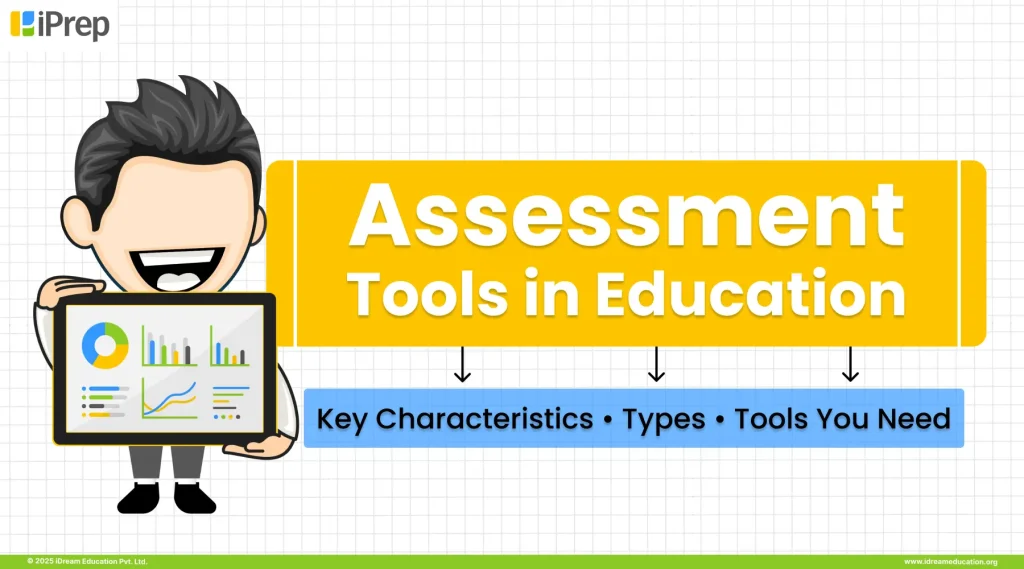
Assessments have always been a part of how we learn. From quick quizzes to year-end exams, they help us understand what we know, what we don’t, and where we need to improve. But if we pause and look closely, assessments are not just tests they are tools that shape learning itself.
Assessments in education become even more meaningful. They guide teachers in understanding each student’s progress and reveal learning gaps that may otherwise stay hidden. Assessment in education also helps schools decide what kind of support different learners need. A good assessment doesn’t just measure learning, instead it informs and improves it.
This brings us to an important question: What exactly are assessment tools in education, and are there any assessment tools truly built for today’s classroom? With students learning at different paces and teachers managing increasingly diverse classrooms, the role of assessment tools is evolving. We now need solutions that do more than score tests. They must capture real learning, offer timely insights, and support personalised learning pathways.
Let’s explore the characteristics of assessment tools in education
Reliability: The Power of Consistent Measurement
Reliability is one of the most important characteristics of any assessment tool. It refers to the tool’s ability to deliver consistent results whenever it is used. Whether an assessment is conducted today or repeated later, and whether it is applied to a small group or across a large-scale implementation, a reliable tool ensures that outcomes remain stable and predictable.
This consistency matters because it shows that the assessment is measuring the skill or knowledge accurately and not influenced by chance, timing, or the size of the student group. When assessment tools in education are reliable, teachers and decision-makers can trust the results and confidently use them to guide learning and improvement.
Validity: Measuring What Truly Matters
Validity ensures that an assessment tool is actually measuring what it is meant to measure. It’s not enough for an assessment to simply generate scores, but those scores must accurately reflect the learning objective or skill being evaluated.
If a tool is valid, the questions, format, and difficulty level all align with the intended learning outcomes. This means the results genuinely show a student’s understanding, not something unrelated such as test-taking tricks or memorisation. In short, validity makes an assessment tool meaningful and ensures that you are measuring the right thing for the right purpose.
Fairness (Equity): Equal Opportunity for Every Learner
Fairness ensures that assessment tools in education are working equally well for all students, regardless of their background, learning style, or level of exposure. An equitable assessment does not unintentionally favour one group over another; instead it gives every learner a fair chance to show what they truly know and can do.
This means the assessment should use methods and formats that all students are comfortable with, and the content should be free from bias that might confuse or disadvantage certain learners. When students understand the format and context beforehand, they can focus on demonstrating their actual learning rather than struggling with unfamiliar structures. Fairness ensures that the results reflect genuine learning, not accidental advantages or obstacles.
Consistency (Standardization): Uniform Processes for Accurate Comparison
Consistency, or standardization, means that every student experiences the assessment in the same way. The questions, instructions, testing conditions, and scoring criteria should be uniform for everyone. When the same methods and procedures are used across all learners, it becomes easier to compare results fairly and understand true differences in learning, not differences caused by variations in how the test was conducted.
Whether it’s a questionnaire, a digital test, or a practical task, standardization ensures that every student is evaluated on the same scale. This uniformity strengthens the reliability of the assessment and makes the results more transparent and meaningful for teachers, schools, decision makers and learners alike.
Understanding the Various Types of Assessment in Education
Assessments come in many forms, each designed with a specific purpose in mind. Some help teachers track learning as it happens, while others evaluate what students have learned at the end of a topic or term. Certain assessments dig deeper to uncover gaps, strengths, and learning needs, helping teachers plan targeted interventions. Understanding these different types is essential because no single assessment can give a complete picture of a student’s learning.

Diagnostic Assessments: Understanding Students Before Teaching Begins
Diagnostic assessments are conducted at the beginning of a school year, term, or new unit to get a clear picture of where students currently stand. In many education programs, this is also known as a baseline assessment. In these programs it is a one-time activity designed to identify learning levels and gaps before planning any intervention or solution for students.
These assessments help teachers and decision-makers understand what students already know, what they struggle with, and which areas require additional support. With this clarity, schools can design more targeted teaching strategies, while education enablers can plan focused interventions such as smart classrooms with bridge courses or a complete adaptive learning solution. By starting with this insight, the learning journey becomes more meaningful, ensuring that every plan or intervention is built on each student’s real starting point.
Formative Assessments: Continuous Checks During the Learning Process
Formative assessments take place during teaching sessions. They act like a silent observer in the classroom, constantly capturing what students are understanding and where they may need extra support while the learning is still happening. These are usually quick, low-pressure exercises and often conducted by teachers through practice questions, short quizzes, or quick checks for understanding.
In many digital education programs, program managers also conduct midline assessments. These are conducted similarly to baseline assessments but are used to measure students’ progress in the middle. Additionally, formative assessments for K–12 are also conducted in smart class setups. These midterm assessments can be carried out using portable assessment devices, making the setup easy to use and enabling quick implementation of midline evaluations in schools.
Summative Assessments: Measuring Learning at the End
Summative assessments take place at the end of a learning period such as a unit, semester, or academic year. This is to evaluate how much students have learned overall. In many digital education programs, these are known as end-line assessments, as they provide a final snapshot of student learning outcomes after all teaching and interventions are completed.
The main purpose of summative assessments is to measure student achievement against predefined standards/ learning goals/learning level. Unlike formative assessments, which guide teaching in the moment, summative assessments focus on evaluating outcomes. They help teachers, schools, and education partners understand whether the learning objectives/outcomes are successfully met and how well students performed after the entire learning process.
Impact Assessment: End-to-End Assessment Management in the Program
This comprehensive assessment framework integrates diagnostic, formative, and summative assessments to evaluate student learning and overall program effectiveness. In school education programs, baseline (diagnostic) assessments help identify learning gaps and establish students’ starting levels. Based on these insights, targeted interventions and continuous guidance are planned for both students and teachers throughout the year. Finally, endline (summative) assessments measure progress, highlight improvement, and demonstrate the overall impact of the program.
Ipsative Assessments: Individualised Students Progress
Ipsative assessments focus on a student’s individual learning journey. These assessments in education look at how much a student has improved compared to their earlier performance. This approach highlights personal strengths, areas of improvement, and real progress over time. It shifts the focus from competition to growth.
This idea is very similar to how personalized adaptive learning (PAL) solutions work today. In adaptive platforms, each student gets a unique learning path – even though the system is designed universally. Students begin with a diagnostic assessment that identifies their learning gaps. They then move through personalised content, formative checks, remedial videos, and finally a summative test to achieve mastery.
The key advantage is that there is no fixed limit to a student’s learning journey. They can learn at their own speed, pace, and style. They can attempt formative assessments multiple times, revisit remedial content whenever needed, and grow without the fear of being judged or compared to others.
Ipsative assessments, through assessment tools like iPrep PAL celebrate progress, encourage self-improvement, and align students naturally with learning and growth.
Criterion-Based Assessments: Measuring Mastery Against Set Standards
Criterion-based (or criterion-referenced) assessments evaluate how well a student has performed against clearly defined learning goals or standards. The focus is not on how they compare to other students, it’s on whether they have mastered the specific skills or concepts expected at their grade level.
In classrooms, this often takes the form of tests, assignments, or tasks designed to check understanding based on curriculum standards. Outside the classroom, you’ll find this approach in places such as licensing or certification exams, where passing depends on meeting a set score or proficiency level, not outperforming others.
These assessments promote individual mastery and provide transparent expectations just like in PAL where mastery is essential, but it is always aligned with curriculum standards and foundational learning. This ensures that every student progresses at their own pace while still meeting the learning outcomes expected for their grade level.
Let’s Explore Two Assessment Tools in Education Designed by Us
iPrep Assessment App: Flexible, Scalable, and Offline-Ready
The iPrep Assessment App is designed to work seamlessly on web, mobile, tablets, and laptops, making it highly accessible for diverse learning environments. Built after taking inputs from ecosystem partners and from the education programme outcome data, it is tailored specifically for offline education programs. The app supports baseline, midline, and endline assessments, aligned with state boards, language and curriculum goals, or specific project objectives.
Reliable for both small- and large-scale implementations, the app records data offline and automatically syncs it to a central dashboard when internet connectivity is available. This allows educators and program managers to monitor, analyze, and measure learning levels and student progress efficiently, ensuring that assessment insights can directly inform teaching and interventions.
What makes the iPrep Assessment App truly unique is that it combines diagnostic, formative, and summative assessments into a single, unified tool. This means educators can understand students’ starting points, track their learning progress continuously, and measure mastery at the end all within the same platform. By integrating these assessment types, the app provides a comprehensive view of each student’s learning journey, making it a powerful and versatile tool for modern education programs.
iPrep PAL: Personalized Adaptive Learning for Every Learner
iPrep PAL is one of the leading ipsative assessment tools in education, designed to track and support individual student progress. It has already demonstrated significant impact, generating learning gains of up to 44% in government initiatives such as e-Adhigam.
This student-specific solution starts by diagnosing each learner’s gaps, then provides adaptive practice and remedial video content to strengthen foundational learning. Students take a final assessment for mastery of each topic, ensuring grade level learning. On iPrep PAL, their learning journey is personalized, targeted, and effective. The results are always aligned with curriculum standards and foundational learning goals, allowing every student to progress at their own pace while still achieving expected learning outcomes. iPrep PAL empowers students to learn their way, making education truly personalized and self-driven.
As classrooms and learning methods continue to change, the right assessment tools in education are more important than ever. To experience assessment tools for your education program or schools, get in touch with us at: +91 7678265039. You can also write to us share@idreameducation.org or share your details here
Frequently Asked Questions -
1. What is assessment in education?
Assessment in education refers to the methods used to check what students have learned. It helps understand what they know, what they need help with, and how their learning can be improved.
2. Why is assessment important for students and teachers?
Assessment helps students track their progress and helps teachers identify learning gaps. It guides them in planning the right support so that every student can learn better.
3. What are the characteristics of good assessment tools in education?
Reliability: The Power of Consistent Measurement Validity: Measuring What Truly Matters Fairness (Equity): Equal Opportunity for Every Learner Consistency (Standardization): Uniform Processes for Accurate Comparison
4. What is a diagnostic assessment in education?
A diagnostic assessment is conducted before teaching begins, such as at the start of a school year, term, or a new unit to understand students’ current learning levels. It helps identify what they already know, where they have gaps, and what support they need. With this insight, teachers and education providers can plan targeted teaching strategies or interventions such as bridge courses or adaptive learning solutions, making learning more meaningful and personalized from the very beginning.
5. What is a formative assessment in education?
A formative assessment happens during the teaching process to check how well students are understanding the lesson in real time. These are usually quick and low-pressure, such as practice questions, short quizzes, or quick checks by teachers. In digital programs, similar assessments called midline assessments are also used to measure progress midway. They help teachers provide timely support and adjust teaching strategies while learning is still ongoing. K-12 formative assessment are also conducted in smart class setup using targeted assessment tool
6. What is a summative assessment in education?
A summative assessment is conducted at the end of a learning period such as after a unit, term, or end of the academic year to measure how much students have learned overall. In digital education programs, it is often called an end-line assessment. Its main purpose is to evaluate student achievement against set learning goals and understand whether the learning objectives were met after all teaching and interventions are completed.
7. What is an impact assessment in education programs?
An impact assessment evaluates the overall effectiveness of an education program by combining diagnostic (baseline), formative, and summative (endline) assessments. It starts by identifying students’ initial learning levels, tracks their progress through ongoing checks, and finally measures improvement at the end of the program. This helps schools and education partners understand how well the interventions worked and what impact the program had on student learning.
8. What is an ipsative assessment in education?
An ipsative assessment evaluates a student’s progress by comparing their current performance to their own past performance, rather than to others. It focuses on individual growth, strengths, and improvement over time. This approach aligns closely with adaptive learning systems, where each student follows a personalised path starting from a diagnostic assessment and progressing through formative checks, remedial support, and final mastery at their own pace.
9. What is a criterion-based assessment in education?
A criterion-based assessment measures a student’s performance against predefined learning goals or standards, rather than comparing them to other students. It checks whether a student has mastered the required skills or concepts for their grade level. These assessments are commonly used in classroom tests and assignments aligned with the curriculum, as well as in certification or licensing exams where success depends on meeting a set proficiency level.
10. What types of assessment tools do you offer for schools and learners?
iPrep Assessment App, which is flexible, scalable, and works even without internet, making it ideal for schools with limited connectivity. iPrep PAL, a personalised adaptive learning solution that uses assessments to identify learning gaps and then delivers tailored content to help individual students achieve mastery.


